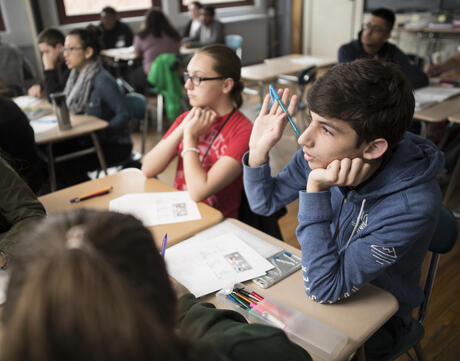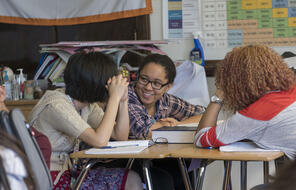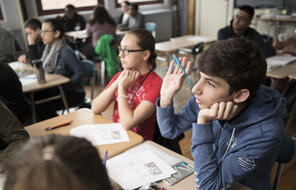
Create a Goal and Discover Your “Why”
Duration
One 50-min class periodSubject
- Advisory
- Civics & Citizenship
- English & Language Arts
- History
- Social Studies
Grade
6–12Language
English — USPublished
Updated
Overview
Why Is Goal Setting Important for Students?
Setting a goal at the beginning of the school year is a useful exercise that orients students toward success. In fact, when students are provided with instructional time to set personal goals, they demonstrate higher academic achievement and engagement in the classroom. 1
About This Goal-Setting Activity
This activity guides students through a series of reflections to help them set a personal goal, uncover their intrinsic motivation 2 , and brainstorm short-term goals that are aligned with their larger goal. By the end of the activity, students will have a strong understanding of why their goal matters to them and what actionable steps they can take toward accomplishing their goal.
- 1D. A. Rowe, V. L. Mazzotti, A. Ingram, and S. Lee, “Effects of Goal-Setting Instruction on Academic Engagement for Students At Risk,” Career Development and Transition for Exceptional Individuals 40, Issue 1 (2017): 25–35.
- 2According to research, intrinsic motivation is more effective than extrinsic factors in helping students achieve their goals. See Robert A. Augustyniak et al., “Intrinsic motivation: An overlooked component for student success,” Advances in Physiology Education 40, Issue 4 (2016): 465–66.
Preparing to Teach
A Note to Teachers
Before teaching this lesson, please review the following information to help guide your preparation process.
Procedure
How to Implement Student Goal-Setting
Extension Activities
Materials and Downloads
Quick Downloads
Download the Files
Unlimited Access to Learning. More Added Every Month.
Facing History & Ourselves is designed for educators who want to help students explore identity, think critically, grow emotionally, act ethically, and participate in civic life. It’s hard work, so we’ve developed some go-to professional learning opportunities to help you along the way.
Exploring ELA Text Selection with Julia Torres
On-Demand

Working for Justice, Equity and Civic Agency in Our Schools: A Conversation with Clint Smith
On-Demand

Centering Student Voices to Build Community and Agency
On-Demand
















